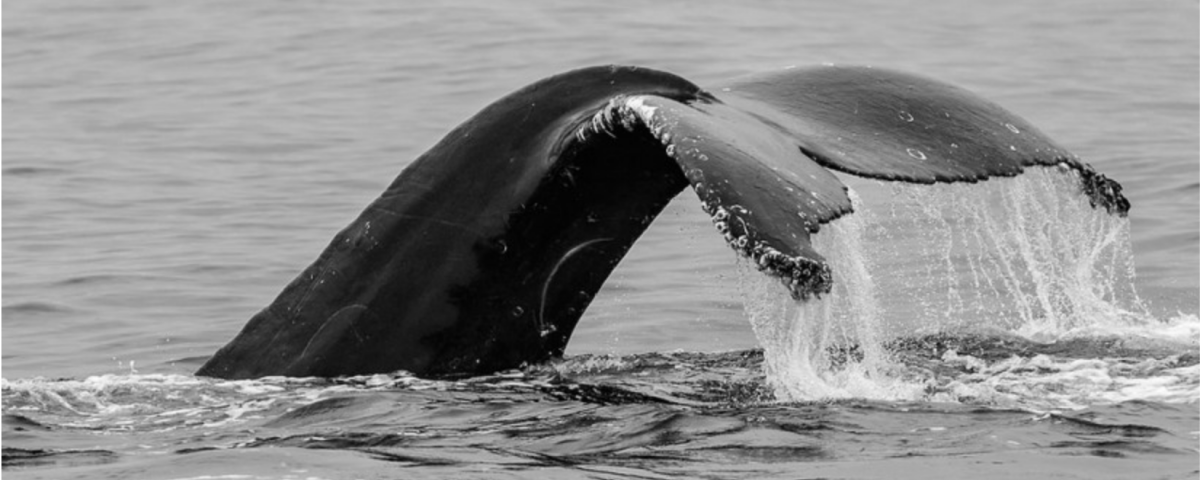
Learn About All Things Sea Life In The Monterey Bay
May 26, 2018
Spyhopping Whales on Monterey Bay
November 2, 2018Tail slapping is an exciting whale behavior that is spotted quite often on Sea Goddess Whale Watching Monterey Bay trips. But why exactly do they do it?
A tail slap also known as “lobtailing” is the act of a whale or dolphin lifting its tail flukes out of the water and forcefully slapping them onto the surface of the water, often repetitively, resulting in a loud slap. Large whales, such as humpbacks, tend to lobtail by positioning themselves vertically downwards into the water and slapping the surface by bending the tail stock. Interestingly, this whale behavior is more common within species that have a complex social order (humpbacks, sperm, right, and grey whales) rather than solitary species such as blue whales.
While there are many theories on why whales lobtail including attracting the opposite sex, aggressive posturing to ward off males, communicating with other whales, scaring prey, defense or play, a more plausible suggestion relating mostly to humpback whales, is a means of foraging. As a humpback lobtail’s, the hypothesis is the loud noise causes fish to become frightened, resulting in a tightened school, making it easier for the humpbacks to feed. This video supports the foraging theory as these whales were right over a big bait ball.
Lobtailing, like breaching, is a form of non-vocal communication and can be heard underwater for several hundred feet. However, the sound doesn’t travel as far as a breach, perhaps due to the weight of a tail vs. their body, or a vocal call which typically happens under water and can travel for miles.




